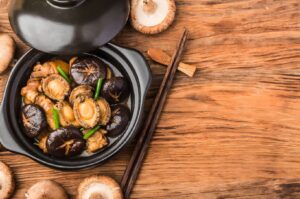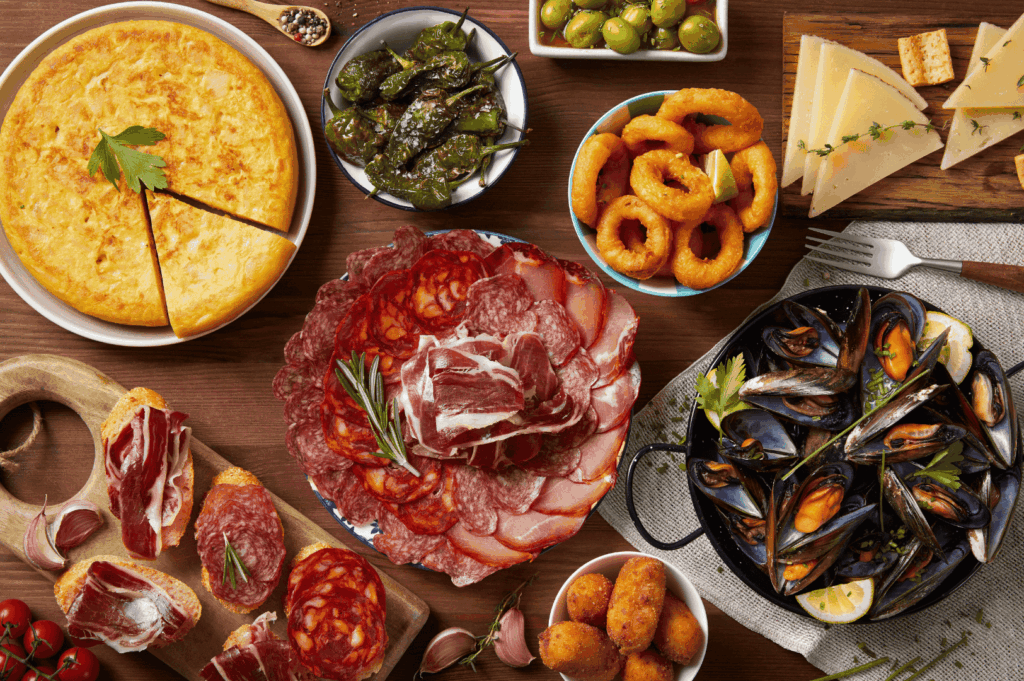
Spanish cuisine has captured the hearts and palates of food lovers around the world, and its global appeal continues to grow. This is a cuisine built on vibrant flavours, rich history, and the joy of sharing. Its heritage is a tapestry woven from diverse regional influences, stretching from the sun-drenched Mediterranean coast to the rugged mountains of the Iberian Peninsula. From the bustling energy of tapas bars to the communal delight of a classic paella, the traditions of Spanish food are a celebration of life itself.
The charm of Spanish cooking lies in its respect for fresh, high-quality ingredients and time-honoured techniques. It’s a cuisine that feels both rustic and refined, simple and complex. This culinary journey will explore the regional diversity, iconic dishes, and modern innovations that make Spanish cuisine so endlessly fascinating and universally loved.The Heart of Spanish Cuisine: Regional Diversity
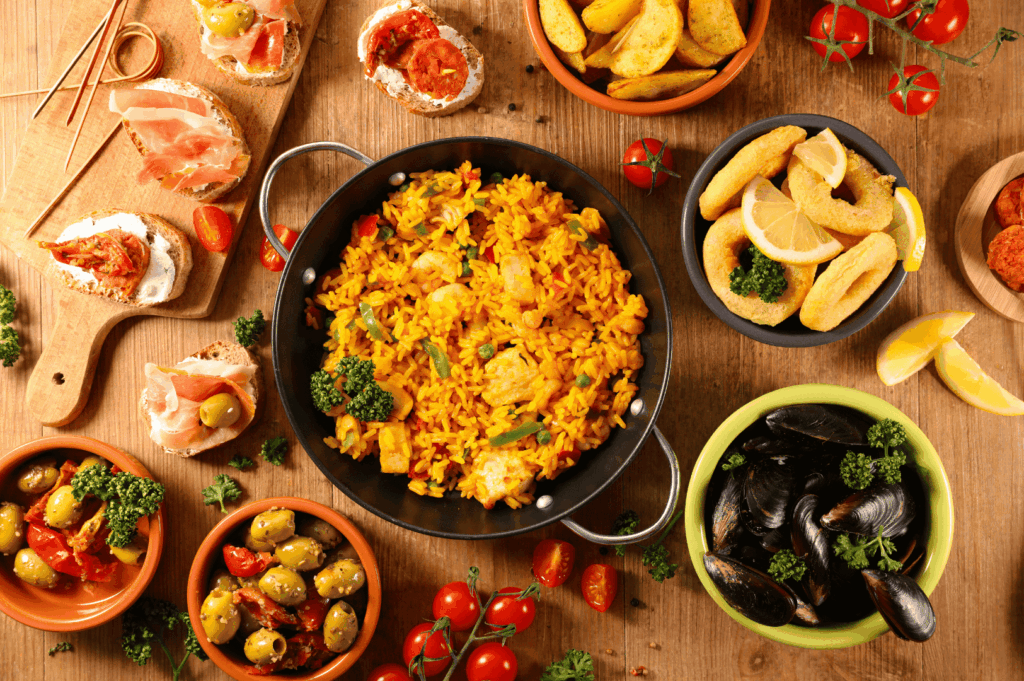
To understand Spanish food, one must first appreciate its incredible regional diversity. The country is a collection of distinct culinary identities, each shaped by its unique geography, climate, and history. In Catalonia, you’ll find inventive dishes that blend mountain and sea, while Andalusia, in the south, showcases the profound influence of Moorish ingredients like almonds and citrus. The Basque Country is renowned for its sophisticated pintxos and exceptional seafood.
Galicia, in the northwest, is famous for its octopus and other fresh catches from the Atlantic. Aragón, inland, is known for its hearty lamb and meat dishes. This regionality means that the taste of Spain is constantly changing as you travel. The generous use of olive oil in the south gives way to richer, heartier fare in the north, creating a dynamic and delicious culinary map.Tapas: A Social Tradition and Culinary Art
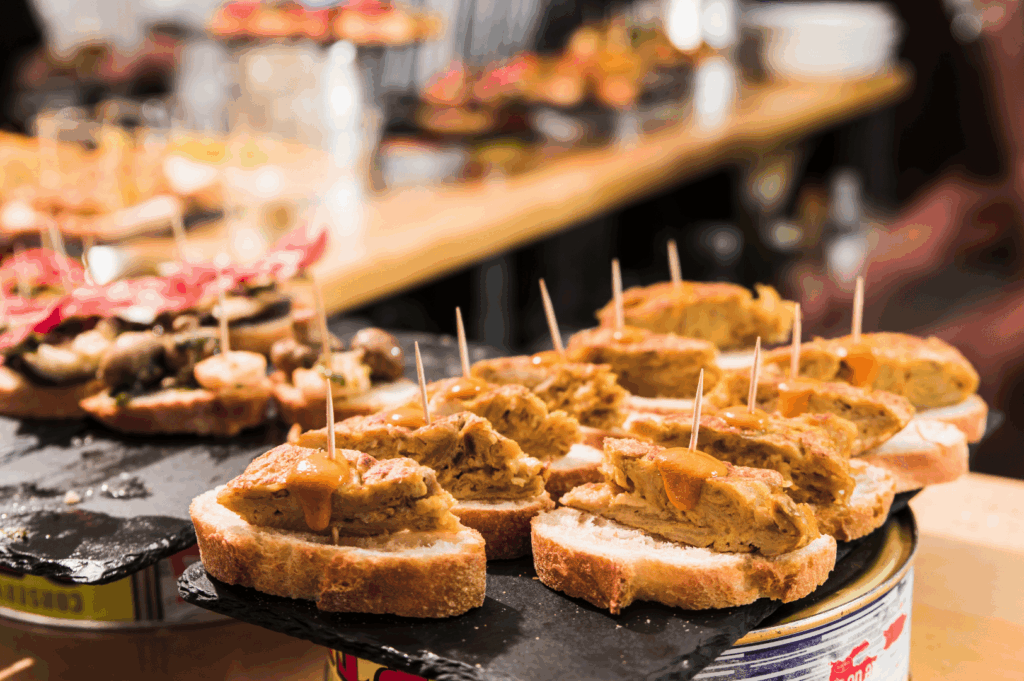
Tapas are more than just small plates; they are a cornerstone of Spanish culture and a symbol of community. The tradition of sharing these delicious bites with loved ones brings people together in a relaxed and social atmosphere. A single popular tapa can serve as a simple appetiser, or a collection of them can form a full and varied meal.
Some of the most famous tapas include patatas bravas (fried potatoes with a spicy tomato sauce), gambas al ajillo (garlic prawns), and croquetas, which are small, breaded and deep fried rolls often filled with a creamy bechamel sauce and cured ham. Another favourite is chorizo cooked in a savoury sauce, often served with crusty bread to soak up every last drop. This is the art of Spanish dining: simple, social, and utterly delicious.
Paella: Spain’s Iconic National Dish
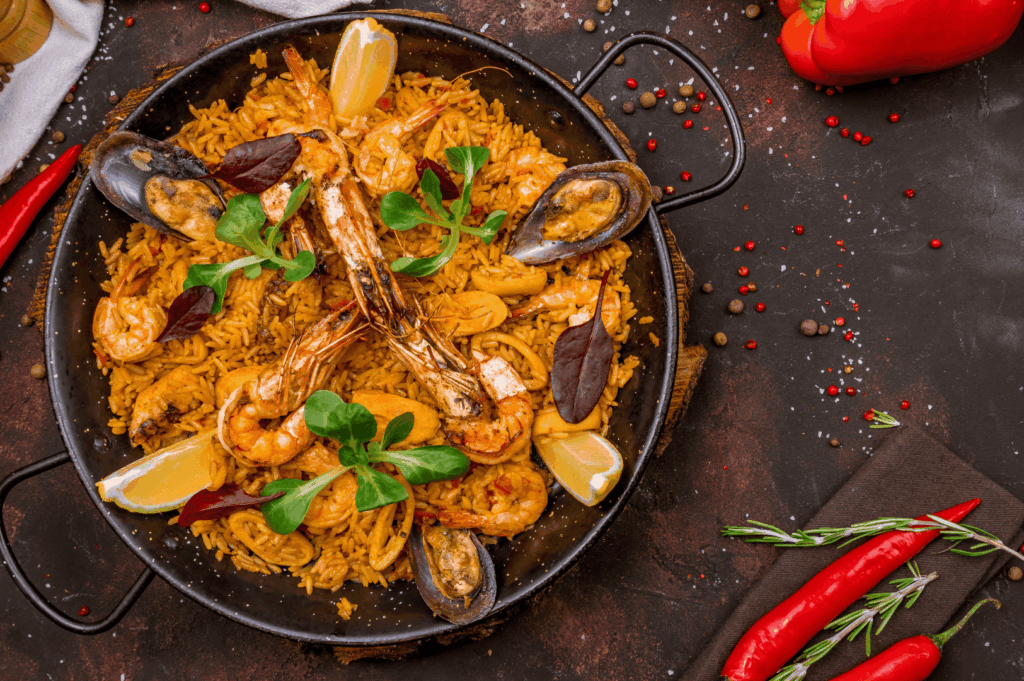
If one dish represents the soul of Spanish cuisine, it is paella. Originating in the Valencia region, this iconic rice dish has evolved into numerous variations, each with its own regional flair. While many outside of Spain think of seafood paella as the standard, the traditional Valencian version includes chicken, rabbit, and beans. Today, you can find mixed paellas, vegetarian versions, and even some made with pasta instead of rice.
Paella is the ultimate comfort food, a one-pan wonder perfect for a dinner party or a family gathering. The keys to a perfect paella are the quality of the stock, the right type of short-grain rice, and the distinctive flavour and colour imparted by saffron. The slightly crispy layer of rice at the bottom of the pan, known as socarrat, is highly prized and a sign of a well-made dish.
The Role of Olive Oil in Spanish Cuisine

Olive oil is the lifeblood of Spanish cooking. It is used for everything, from frying and sautéing to drizzling over finished dishes to add a final flourish of flavour. Spain is the world’s largest producer of olive oil, and its quality is revered. Extra virgin olive oil, with its fruity and sometimes peppery notes, is used generously, especially in the south.
The influence of olive oil is felt across the entire spectrum of Spanish food. It provides the base for the sofrito in paella, the sizzle for gambas al ajillo, and the refreshing character of gazpacho. Its central role highlights the Spanish philosophy of using simple, high-quality ingredients to create exceptional flavour.Iconic Spanish Classics: Beyond Tapas and Seafood Paella
While tapas and paella may be the most famous, the world of Spanish classics is vast and varied.
Tortilla Española (Spanish Omelette)
This staple comfort food is made with just eggs, potatoes, and onions. It can be served hot or cold and is a beloved dish throughout Spain.Rabo de Toro
This traditional Spanish braised oxtail dish is celebrated for its rich flavor and slow-cooked tenderness, often enjoyed as a comforting main course in Andalusia and beyond.Gazpacho
This refreshing cold soup from Andalusia is perfect for hot summer days. Made from ripe tomatoes, peppers, cucumbers, garlic, and olive oil, it is the ultimate expression of summer in a bowl.Fabada Asturiana
A rich and hearty bean stew from the northern region of Asturias, this dish features large white beans slow-cooked with chorizo, morcilla (blood sausage), and pork fat.Pisto
This is the Spanish version of ratatouille, a colourful medley of simmered vegetables like tomatoes, peppers, courgettes, and onions.The Influence of Moorish Cuisine on Spanish Food
The history of Spanish cuisine is deeply intertwined with the Moorish occupation of the Iberian Peninsula, which lasted for nearly 800 years. This influence is especially evident in the south, in the region of Andalusia. The Moors introduced ingredients like almonds, citrus fruits, and spices such as saffron, which are now integral to many traditional Spanish recipes.
You can see these flavours in dishes like paella, which relies on saffron for its signature colour and aroma, as well as in various almond-based sauces and desserts. This historical layer adds a unique depth and complexity to the Spanish culinary identity.Famous Innovations in Spanish Cuisine
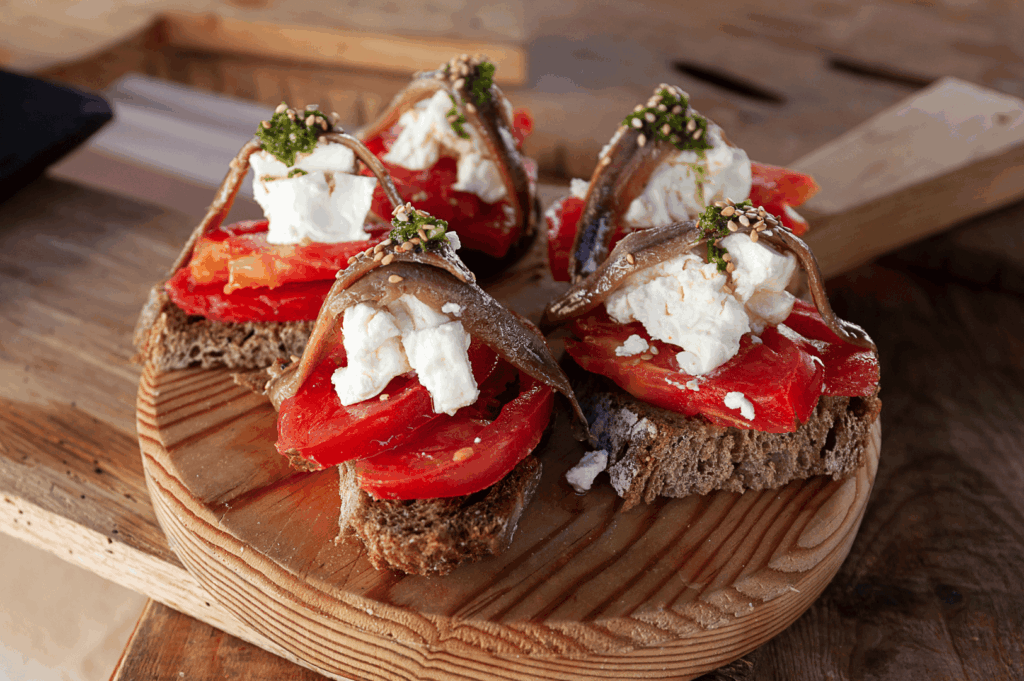
While deeply rooted in tradition, Spanish cuisine is also a hotbed of innovation. Spanish chefs, like the pioneers at El Celler de Can Roca, have been at the forefront of the molecular gastronomy movement, deconstructing classic dishes and creating entirely new sensory experiences.
This has led to modern takes on traditional Spanish dishes, such as deconstructed paella or espuma-topped tapas. There is also a rise in fusion cuisine, blending Spanish traditions with international influences to create exciting new flavour combinations.Where to Go for an Best Spanish Cuisine Experience in Singapore
- Barrio Spanish Restaurant: Known for its vibrant atmosphere and warm hospitality, Barrio serves up a diverse menu that showcases traditional Spanish dishes made with fresh, high-quality ingredients. From classic tapas like patatas bravas and croquetas to rich and flavorful paellas, Barrio provides a true culinary journey through Spanish cuisine.
- Sabio by the Sea: Sabio by the Sea offers a classic Spanish experience with a stunning waterfront view and inviting atmosphere. Enjoy traditional tapas alongside flavorful seafood paella, perfect for relaxed gatherings or special occasions. Combining authentic Spanish flavors with warm hospitality, it captures the true essence of Spanish cuisine.
- FOC Restaurant: This modern restaurant brings together the best of Spanish tapas culture with a focus on high-quality Spanish meats. It’s a stylish setting to explore a menu of both classic and contemporary Spanish bites, featuring popular dishes that highlight fresh bread and vibrant green peppers.
Spanish Cuisine in the Modern World: Tradition Meets Innovation
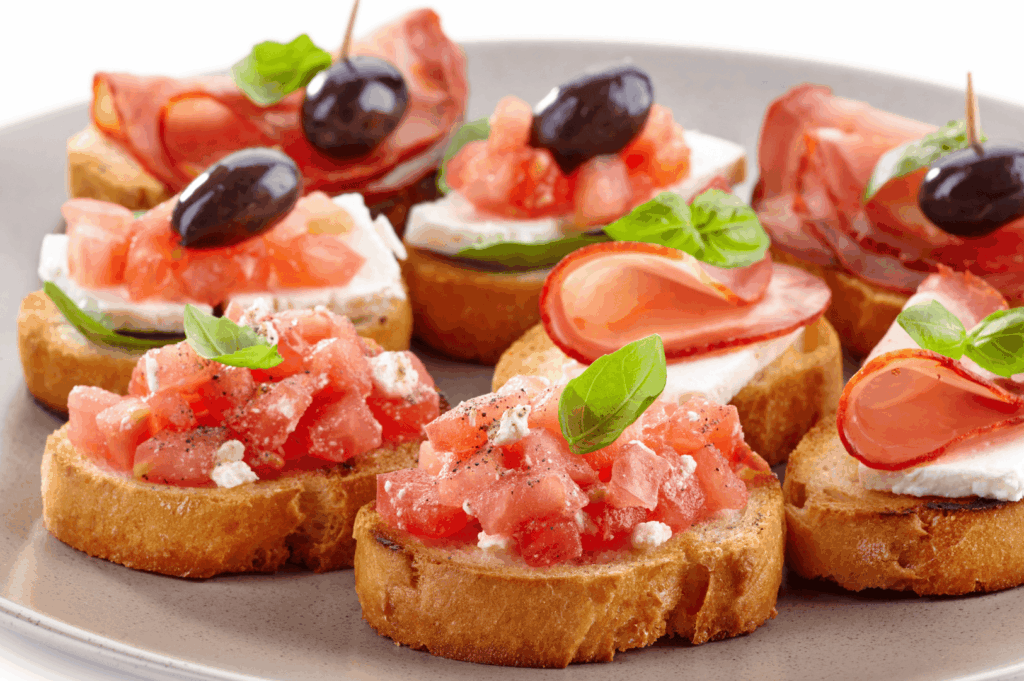
The modern world of Spanish cuisine is a dynamic interplay between tradition and innovation. Chefs are constantly reinterpreting Spanish classics, evolving the concepts of tapas, paella, and other regional specialities. Modern techniques like sous-vide cooking are integrated while staying true to the foundations of Spanish flavour.
This willingness to evolve while respecting the past is what keeps Spanish food exciting and relevant. It ensures that traditional dishes are preserved for future generations while also pushing the boundaries of what Spanish cuisine can be.Conclusion: Why Spanish Cuisine is Loved Globally

The global love for Spanish cuisine lies in its incredible versatility and its ability to bring people together. From the simplest popular tapa like pimientos de padrón to a grand seafood paella shared among friends, there is a Spanish dish for every occasion. It is a cuisine that perfectly balances tradition, flavour, and community.
Spanish food is a celebration of life—of fresh ingredients, of shared meals, and of the simple joy of eating well. It is this heartfelt approach to food that has earned it a cherished place on the world’s culinary stage,much like how Exploring the Richness of Japanese Cuisine in Singapore: From Sushi to Kaiseki highlights the enduring appeal of Japanese dining traditions.
